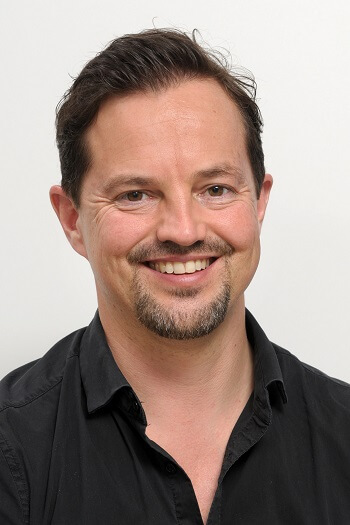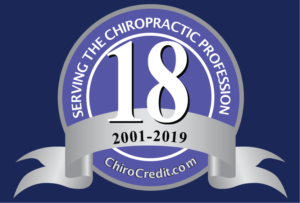In this upcoming episode, Dr. Meier will discuss how people move differently in the presence of (or in anticipation of) pain. Changes in motor control may play an important role in musculoskeletal pain. His lab uses a cross-disciplinary approach that combines neuroscience and movement biomechanics to provide new insights into the role of potential interactions between movement behavior, psychological factors and supraspinal mechanisms in the development and maintenance of persistent low back pain. We’ll touch also on fear avoidance and pain related movement avoidance. Dr. Michael L. Meier is a senior pain researcher and group leader at the Department of Chiropractic Medicine at the University of Zurich. He received his master’s degree in neuropsychology and his doctorate in cognitive neuroscience from the University of Zurich, focusing on the processing of pain and nociception in the brain. In 2019, he received a grant from the Swiss National Science Foundation (SNF) to study the role of movement behavior and cortical processes in the development and persistence of low back pain. A hallmark of his work is linking research from different disciplines such as biomechanics, neuroscience, and psychology, shedding light on novel interacting pathomechanisms underlying persistent low back pain whose pathoanatomical cause is often unclear.
Posts
Dr. Malaya is a research associate at Parker University in Dallas, Texas. He graduated from Parker in 2018 with a Doctorate in Chiropractic and is currently pursuing a PhD in Motor Control from the University of Houston. His current research interests are in sensorimotor integration, postural control and adaptation, as well as the neural mechanisms of manual manipulation. His overall goal is to help expand the foundational mechanisms and practical applications of manual joint manipulation as it relates to movement and neural rehabilitation.
Dr. Haworth’s research focuses on the mechanisms responsible for the integration of sensorimotor information in the production of human behavior. He uses eye-tracking combined with motion capture and posturographic measures to identify motor strategies used during daily tasks like upright standing, walking, and interpersonal communication. Extensions of this work include the identification of early indicators of clinical disorders and the production of novel therapeutic modalities. He has many active collaborations with colleagues in fields including chiropractic science and pediatric rehabilitation technology. He is focused to better understand the development of motor and social-cognitive skills in children with, and without, autism.
Please comment below if you have any questions for us during the interview. I might choose some of them for our conversation.
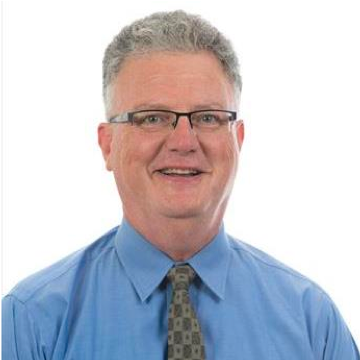
Dr. Haussler graduated from The Ohio State University, College of Veterinary Medicine in 1988 and completed a small animal internship in Sacramento, CA. To further his training in the conservative management of spinal-related disorders, he pursued human training at Palmer College of Chiropractic-West and completed a veterinary chiropractic certification program in 1993. He attended the University of California-Davis to attain a PhD focusing on spinal pathology and pelvic biomechanics in Thoroughbred racehorses. Currently, he is an Associate Professor at the Orthopaedic Research Center at Colorado State University and is involved in teaching, clinical duties, and research into the objective assessment of musculoskeletal pain, spinal dysfunction and the application of physical therapy and rehabilitation. Please comment below if you have any questions for us during the interview. I might choose some of them for our conversation.
Episode

In this interview, Dr. Scali discusses with me the upper cervical spine and myodural bridge (connective tissue between suboccipital muscles and the cervical spinal dura mater). Dr. Frank Scali grew up in Valley Stream, Long Island, New York, and studied Neuroscience at Stony Brook University. In 2009, he received his Doctorate in Chiropractic at Logan University in Chesterfield, Missouri. During his time in medical school, Dr. Frank Scali professionally prosected cadaveric specimens for Gray’s Anatomy and illustrated for multiple journals and textbooks, including the Oxford Handbook of Bariatric Surgery. While attending medical school, he published multiple non-variant anatomical findings in the medical literature and served as an Ad Hoc Reviewer in Journals such as The Spine Journal, The Anatomical Record, Surgical and Radiological Anatomy, and others. In 2018, he graduated with his MD from AUC School of Medicine with fifty-four publications, including textbook contributions and a patent for a medical device.
Dr. Scali is board certified in Chiropractic and Medicine. His current title is Assistant Professor of Medical Education and Anatomy at the California University of Science and Medicine. At CUSM, Dr. Scali serves as the Director of the ATLAS Lab Center, is the Director of the USMLE Board Preparation, and is the Course Director for MSK/Derm, Surgical Anatomy, and the Step 1/2CK Board Prep course. He was inducted into the Sigma Xi Scientific Research & Honor Society in 2020 and serves on the Editorial Board for the Journal of Medicine since 2019. As Assistant Professor of Medical Education, Dr. Scali has achieved dozens of teaching awards in Medical Foundations, MSK/Derm, Neuroscience, Reproductive Medicine, and Medical Board Preparation courses. Because of his innovative teaching style, in 2021, Dr. Scali became the inaugural recipient of the Robert Suskind & Leslie Lewinter-Suskind Pre-Clinical Faculty of the Year award.
Visit Dr. Scali’s research at researchgate.net and view his faculty page.
Here are the articles we discuss during this episode:
| 1. | Anatomical connection between the rectus capitis posterior major and the dura mater.Scali F, Marsili ES, Pontell ME.Spine (Phila Pa 1976). 2011 Dec 1;36(25):E1612-4. doi: 10.1097/BRS.0b013e31821129df.PMID: 21278628 |
| 2. | Investigation of meningomyovertebral structures within the upper cervical epidural space: a sheet plastination study with clinical implications.Scali F, Pontell ME, Nash LG, Enix DE.Spine J. 2015 Nov 1;15(11):2417-24. doi: 10.1016/j.spinee.2015.07.438. Epub 2015 Jul 22.PMID: 26210227 |
| 3. | Histological analysis of the rectus capitis posterior major’s myodural bridge.Scali F, Pontell ME, Enix DE, Marshall E.Spine J. 2013 May;13(5):558-63. doi: 10.1016/j.spinee.2013.01.015. Epub 2013 Feb 11.PMID: 23406969 |
| 4. | The Posterior Atlantooccipital Membrane: The Anchor for the Myodural Bridge and Meningovertebral Structures.Scali F, Ohno A, Enix D, Hassan S.Cureus. 2022 May 30;14(5):e25484. doi: 10.7759/cureus.25484. eCollection 2022 May.PMID: 35686279 Free PMC article. |

Tue Secher Jensen graduated from the University of Southern Denmark in 2002 and has been working as a researcher since his student years. After graduation, he worked as a chiropractic intern and as a chiropractor for a couple of years alongside his work as a research assistant. In 2009, he defended his PhD thesis on the prevalence, development and clinical value of Modic changes in the general population. From 2013 to 2016, he was employed as a senior researcher and clinical associate professor at the Spine Centre of Southern Denmark and since 2013 he has also been employed as a senior researcher at the Nordic Institute of Chiropractic and Clinical Biomechanics (NIKKB). Since 2017, Tue Secher Jensen has been employed at the Diagnostic Centre – Imaging Sector at the Regional Hospital in Silkeborg, Denmark, as a chiropractor doing research and reading spinal MRI. From 2018 to 2019 he was an associate professor at the Department of Clinical Medicine at Aarhus University. Tue Secher Jensen was recently (January 1st 2020) appointed, along with Lise Hestbaek (who has previously been on the podcast), as professors at the Department of Sports Science and Clinical Biomechanics at SDU.
Tue’s research has primarily focused on the clinical value of MRI findings in people with back pain. In recent years his research focus has shifted more towards clinical guidelines, knowledge translation and implementation.
See more of Tue’s research at researchgate.net.
The articles we discuss in this episode include:
| 1. | Systematic literature review of imaging features of spinal degeneration in asymptomatic populations. |
| Brinjikji W, Luetmer PH, Comstock B, Bresnahan BW, Chen LE, Deyo RA, Halabi S, Turner JA, Avins AL, James K, Wald JT, Kallmes DF, Jarvik JG. | |
| AJNR Am J Neuroradiol. 2015 Apr;36(4):811-6. doi: 10.3174/ajnr.A4173. Epub 2014 Nov 27. Review. | |
| PMID: 25430861 [PubMed – indexed for MEDLINE] Free PMC Article | |
| Similar articles |
| 2. | MRI Findings of Disc Degeneration are More Prevalent in Adults with Low Back Pain than in Asymptomatic Controls: A Systematic Review and Meta-Analysis. |
| Brinjikji W, Diehn FE, Jarvik JG, Carr CM, Kallmes DF, Murad MH, Luetmer PH. | |
| AJNR Am J Neuroradiol. 2015 Dec;36(12):2394-9. doi: 10.3174/ajnr.A4498. Epub 2015 Sep 10. Review. | |
| PMID: 26359154 [PubMed – indexed for MEDLINE] Free Article | |
| Similar articles |
| 3. | Magnetic resonance imaging findings as predictors of clinical outcome in patients with sciatica receiving active conservative treatment. |
| Jensen TS, Albert HB, Sorensen JS, Manniche C, Leboeuf-Yde C. | |
| J Manipulative Physiol Ther. 2007 Feb;30(2):98-108. | |
| PMID: 17320730 [PubMed – indexed for MEDLINE] | |
| Similar articles |
| 4. | Natural course of disc morphology in patients with sciatica: an MRI study using a standardized qualitative classification system. |
| Jensen TS, Albert HB, Soerensen JS, Manniche C, Leboeuf-Yde C. | |
| Spine (Phila Pa 1976). 2006 Jun 15;31(14):1605-12; discussion 1613. | |
| PMID: 16778696 [PubMed – indexed for MEDLINE] | |
| Similar articles |
| 5. | Modic changes, possible causes and relation to low back pain. |
| Albert HB, Kjaer P, Jensen TS, Sorensen JS, Bendix T, Manniche C. | |
| Med Hypotheses. 2008;70(2):361-8. Epub 2007 Jul 10. | |
| PMID: 17624684 [PubMed – indexed for MEDLINE] | |
| Similar articles |
| 6. | Vertebral endplate signal changes (Modic change): a systematic literature review of prevalence and association with non-specific low back pain. |
| Jensen TS, Karppinen J, Sorensen JS, Niinimäki J, Leboeuf-Yde C. | |
| Eur Spine J. 2008 Nov;17(11):1407-22. doi: 10.1007/s00586-008-0770-2. Epub 2008 Sep 12. Review. | |
| PMID: 18787845 [PubMed – indexed for MEDLINE] Free PMC Article | |
| Similar articles |
| 7. | Modic changes-Their associations with low back pain and activity limitation: A systematic literature review and meta-analysis. |
| Herlin C, Kjaer P, Espeland A, Skouen JS, Leboeuf-Yde C, Karppinen J, Niinimäki J, Sørensen JS, Storheim K, Jensen TS. | |
| PLoS One. 2018 Aug 1;13(8):e0200677. doi: 10.1371/journal.pone.0200677. eCollection 2018. | |
| PMID: 30067777 [PubMed – indexed for MEDLINE] Free PMC Article | |
| Similar articles |
| 8. | Antibiotic treatment in patients with chronic low back pain and vertebral bone edema (Modic type 1 changes): a double-blind randomized clinical controlled trial of efficacy. |
| Albert HB, Sorensen JS, Christensen BS, Manniche C. | |
| Eur Spine J. 2013 Apr;22(4):697-707. doi: 10.1007/s00586-013-2675-y. Epub 2013 Feb 13. | |
| PMID: 23404353 [PubMed – indexed for MEDLINE] Free PMC Article | |
| Similar articles |
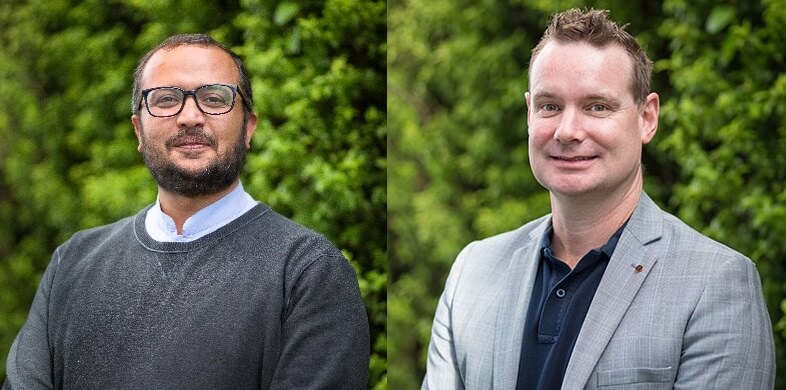
Drs. Imran Niazi and Kelly Holt discuss with me their research on chiropractic, falls risk, and neuroplasticity in various populations. Imran Khan Niazi received his B.Sc. degree in Electrical engineering (specialisation: Biomedical Engineering) from the Riphah International University, Islamabad, Pakistan, in 2005, and his Masters in biomedical engineering from University & FH Luebeck, Luebeck, Germany in 2009. Later he got his PhD under the supervision of Prof. Dario Farina from Center of sensory-motor interaction, Health Science Technology Department, University of Aalborg, Aalborg, Denmark in 2012. After working as a postdoc for a year, he moved to New Zealand in 2013, where he is currently working as Senior Research Fellow at New Zealand College of Chiropractic. He has an adjunct position in Aalborg University, Denmark and Auckland University of Technology, New Zealand.
Dr. Niazi is interested in studying and understanding the altered mechanism of motor control and learning in neurological disorder to develop various technologies that can enhance the QOL of these patients. He has successfully co-supervised 4 PhD and 31 master thesis and currently has 4 active PhD students. He has authored 46 peer-reviewed journal papers and 82 conference papers (proceedings and extended abstracts including). His work has been cited more than 1100 times, and have an h-index of 16 according to google scholar. Over the last ten year, he has received funding worth around US $ 1.5 million from various sources. He is currently working as a review editor for Frontiers in Robotics and AI (Biomedical Robotics) and reviewer for more than 25 engineering/neuroscience journals.
Dr. Kelly Holt was a member of the 1998 inaugural graduating class of the New Zealand College of Chiropractic. Besides his chiropractic degree he also holds a Bachelor of Science majoring in physiology and a PhD in Health Science from the University of Auckland. His PhD focused on the effects of chiropractic care on sensorimotor function and falls risk in older adults. He has published work in a number of peer reviewed journals that investigated the effects of chiropractic care on nervous system function and the reliability of vertebral subluxation indicators and has won a number of international research awards. Kelly worked in private practice as a chiropractor for 10 years following graduation and has taught at the New Zealand College of Chiropractic since 2000 and is currently the Dean of Research at the College. Kelly was named ‘Chiropractor of the Year’ by the New Zealand College of Chiropractic Alumni Association in 2012 and by the New Zealand Chiropractors’ Association in 2014.
View Dr. Imran Niazi’s research at researchgate.net and Dr. Kelly Holt’s research at researchgate.net.
In addition to Drs. Imran Niazi and Kelly Holt, you might also be interested in listening to the previous episode with Dr. Heidi Haavik, also from New Zealand College of Chiropractic discussing “brain adjustments”.
Below are the studies that we discuss in this interview.
| 1. | The effects of a single session of chiropractic care on strength, cortical drive, and spinal excitability in stroke patients. |
| Holt K, Niazi IK, Nedergaard RW, Duehr J, Amjad I, Shafique M, Anwar MN, Ndetan H, Turker KS, Haavik H. | |
| Sci Rep. 2019 Feb 25;9(1):2673. doi: 10.1038/s41598-019-39577-5. | |
| PMID: 30804399 [PubMed – in process] Free PMC Article | |
| Similar articles |
| 2. | The effects of a single session of spinal manipulation on strength and cortical drive in athletes. |
| Christiansen TL, Niazi IK, Holt K, Nedergaard RW, Duehr J, Allen K, Marshall P, Türker KS, Hartvigsen J, Haavik H. | |
| Eur J Appl Physiol. 2018 Apr;118(4):737-749. doi: 10.1007/s00421-018-3799-x. Epub 2018 Jan 11. | |
| PMID: 29327170 [PubMed – indexed for MEDLINE] Free PMC Article | |
| Similar articles |
| 3. | Effectiveness of Chiropractic Care to Improve Sensorimotor Function Associated With Falls Risk in Older People: A Randomized Controlled Trial. |
| Holt KR, Haavik H, Lee AC, Murphy B, Elley CR. | |
| J Manipulative Physiol Ther. 2016 May;39(4):267-78. doi: 10.1016/j.jmpt.2016.02.003. Epub 2016 Apr 2. | |
| PMID: 27050038 [PubMed – indexed for MEDLINE] | |
| Similar articles |
| 4. | Changes in H-reflex and V-waves following spinal manipulation. |
| Niazi IK, Türker KS, Flavel S, Kinget M, Duehr J, Haavik H. | |
| Exp Brain Res. 2015 Apr;233(4):1165-73. doi: 10.1007/s00221-014-4193-5. Epub 2015 Jan 13. | |
| PMID: 25579661 [PubMed – indexed for MEDLINE] | |
| Similar articles |
 Dr. de Luca and I discuss her research on spinal pain in the elderly and chiropractic. Katie de Luca is a post-doctoral research fellow in the Department of Chiropractic at Macquarie University. She is a chiropractor in clinical practice, however her research focuses on the epidemiology and management of musculoskeletal conditions, with expertise in the elderly. In 2016 she was awarded her PhD from the University of Newcastle, School of Medicine and Public Health. Her thesis explored the experience of pain in women with arthritis, and resulted in substantial contributions to the fields of rheumatology, pain and ageing research. She has 25 peer-reviewed journal publications and more than 50 conference presentations, which includes several invited keynote presentations on back pain in the elderly. These have been at regional, national and international conferences in gerontology, pain, public health and chiropractic forums. She is on the editorial boards of Chiropractic and Manual Therapies and JMPT, and peer-reviews for another 13 journals. She has received several large competitive grants, most recently being awarded in excess of $400,00 in an industry led grant from the Australia Chiropractors Association to perform a longitudinal study on back pain in older Australians who present to a chiropractor for treatment of their low back pain. She has won many research prizes, including 1st prize at the World Federation of Chiropractic Biennial Conference in Washington DC (March, 2017). She is actively on the board for the Chiropractic Australia Research Foundation, and is the Research Chair for Sports Chiropractic Australia. She is one of only 13 CARL Fellows, a group which she is privileged to be a part of. She hopes to be a leading chiropractic researcher on spinal pain in the elderly.
Dr. de Luca and I discuss her research on spinal pain in the elderly and chiropractic. Katie de Luca is a post-doctoral research fellow in the Department of Chiropractic at Macquarie University. She is a chiropractor in clinical practice, however her research focuses on the epidemiology and management of musculoskeletal conditions, with expertise in the elderly. In 2016 she was awarded her PhD from the University of Newcastle, School of Medicine and Public Health. Her thesis explored the experience of pain in women with arthritis, and resulted in substantial contributions to the fields of rheumatology, pain and ageing research. She has 25 peer-reviewed journal publications and more than 50 conference presentations, which includes several invited keynote presentations on back pain in the elderly. These have been at regional, national and international conferences in gerontology, pain, public health and chiropractic forums. She is on the editorial boards of Chiropractic and Manual Therapies and JMPT, and peer-reviews for another 13 journals. She has received several large competitive grants, most recently being awarded in excess of $400,00 in an industry led grant from the Australia Chiropractors Association to perform a longitudinal study on back pain in older Australians who present to a chiropractor for treatment of their low back pain. She has won many research prizes, including 1st prize at the World Federation of Chiropractic Biennial Conference in Washington DC (March, 2017). She is actively on the board for the Chiropractic Australia Research Foundation, and is the Research Chair for Sports Chiropractic Australia. She is one of only 13 CARL Fellows, a group which she is privileged to be a part of. She hopes to be a leading chiropractic researcher on spinal pain in the elderly.
View Dr. de Luca’s research at researchgate.net.
Here are the articles we discuss in this interview:
| 1. | Qualitative insights into the experience of pain in older Australian women with arthritis. |
| de Luca K, Parkinson L, Hunter S, Byles JE. | |
| Australas J Ageing. 2018 Sep;37(3):210-216. doi: 10.1111/ajag.12557. Epub 2018 Jun 26. | |
| PMID: 29947165 [PubMed – in process] | |
| Similar articles |
| 2. | The Relationship Between Spinal Pain and Comorbidity: A Cross-sectional Analysis of 579 Community-Dwelling, Older Australian Women. |
| de Luca KE, Parkinson L, Haldeman S, Byles JE, Blyth F. | |
| J Manipulative Physiol Ther. 2017 Sep;40(7):459-466. doi: 10.1016/j.jmpt.2017.06.004. Epub 2017 Oct 13. | |
| PMID: 29037787 [PubMed – indexed for MEDLINE] | |
| Similar articles |
| 3. | Three subgroups of pain profiles identified in 227 women with arthritis: a latent class analysis. |
| de Luca K, Parkinson L, Downie A, Blyth F, Byles J. | |
| Clin Rheumatol. 2017 Mar;36(3):625-634. doi: 10.1007/s10067-016-3343-5. Epub 2016 Jul 6. | |
| PMID: 27383742 [PubMed – indexed for MEDLINE] | |
| Similar articles |
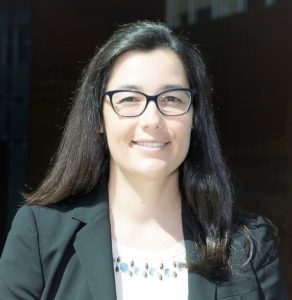 Is sitting killing you? What kind of posture should you have seated or standing? How much time should you sit versus stand at work? How much spine flexion is too much? Can chiropractic manipulation help with seated postures? These are some of the many questions that are addressed in this interview. Dr. Diana De Carvalho is an Assistant Professor at Memorial University of Newfoundland in the Discipline of Medicine, Faculty of Medicine. She holds the Canadian Chiropractic Research Foundation Professorship in Spine Biomechanics and is cross-appointed to the School of Human Kinetics and Recreation.
Is sitting killing you? What kind of posture should you have seated or standing? How much time should you sit versus stand at work? How much spine flexion is too much? Can chiropractic manipulation help with seated postures? These are some of the many questions that are addressed in this interview. Dr. Diana De Carvalho is an Assistant Professor at Memorial University of Newfoundland in the Discipline of Medicine, Faculty of Medicine. She holds the Canadian Chiropractic Research Foundation Professorship in Spine Biomechanics and is cross-appointed to the School of Human Kinetics and Recreation.
After completing a BSc in Human Kinetics at the University of Guelph (2002), she attended the Canadian Memorial Chiropractic College graduating with the class of 2006. Concurrent to part-time clinical practice, Dr. De Carvalho completed a Certificate in University Teaching along with her MSc (2008) and PhD (2015) in Kinesiology at the University of Waterloo. She has extensive experience with industry-partnered research involving both automotive and ergonomic office seating.
Directly related to decreased productivity, decreased quality of life and high health care costs, low back pain might be the first of many negative health outcomes experienced by sedentary workers. Dr. De Carvalho’s research program focuses on spine mechanics, especially in response to sustained flexion, in order to better define and direct early diagnosis, prevention and intervention strategies for low back pain.
In addition to numerous peer-reviewed conference presentations both at the national and international level, Dr. De Carvalho has published articles in such journals as JMPT, Applied Ergonomics and Human Factors and she is an editorial board member of the Journal of the Canadian Chiropractic Association.
Here is a link to Dr. De Carvalho’s webpage at Memorial University.
You can find Dr. De Carvalho’s publications here.
Below are the articles we discussed in the podcast:
|
Partner
Donate
Recent Episodes
- 066- Dr. Ronald Farabaugh – The Cost of Chiropractic vs Medical Management of Adults With Spine-Related Musculoskeletal Pain March 19, 2024
- 065- Dr. Clinton Daniels Discusses Manipulation and Prior Spine Surgery, Medications for Back Pain and More June 15, 2023
- 064- Dr. Matt Fernandez Discusses Physical Activity, Exercise and Chiropractic May 11, 2023
- 063- Dr. Robert Trager Discusses Spinal Manipulation, Lumbar Discectomy and Case Reports January 9, 2023
- 062- Dr. Lindsay Gorrell Discusses Spinal Manipulation, the Vertebral Artery, Reporting of Adverse Events January 3, 2023
- 061- Questioning the Relationship Between Chiropractic and ED Visits December 13, 2022
- 060- Dr. Brian Anderson Discusses Chiropractic, Treatment Escalation, Medical Services November 17, 2022
- 059- Dr. Frank Scali – Upper Cervical Spine and Myodural Bridge July 5, 2022
Security – SSL Certificate
Partner
 Chiropractic Science is a Miami University Digital Health Literacy Partner. Health literacy is the ability to read, write, and talk about health habits in a variety of life situations and environments. Our interprofessional partnership promotes the use and dissemination of electronic materials for evidence-based EHealth.
Chiropractic Science is a Miami University Digital Health Literacy Partner. Health literacy is the ability to read, write, and talk about health habits in a variety of life situations and environments. Our interprofessional partnership promotes the use and dissemination of electronic materials for evidence-based EHealth.

